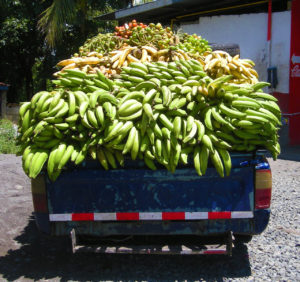Where Does Your Food Come from?
 Have you ever thought about where your food comes from? Most of us likely buy our food from a local grocery store, but have you ever thought about where food such as strawberries or bananas are actually grown? Or how far the salmon behind the fish counter has traveled?
Have you ever thought about where your food comes from? Most of us likely buy our food from a local grocery store, but have you ever thought about where food such as strawberries or bananas are actually grown? Or how far the salmon behind the fish counter has traveled?
Now-a-days we have access to all types of foods, even if they aren’t in season or even native to the United States. How our food is grown, processed, stored, and transported around the world makes a huge impact on our environment and climate change. “Food Miles” is the term used to describe the distance that our food travels from the point where it is grown, to the point where we buy it.
Food miles can create enormous amounts of pollution. This pollution comes from the airplanes, ships, trains, and trucks that food travels on to get to where it needs to go. This results in polluting the air, which can have drastic effects on the environment and our health.
Eating locally is one way to reduce Food Miles! Some supermarkets have designated sections that offer fresh produce from locally grown farms. Check the stickers on the produce or look for signs of where the produce is coming from to see where the food has been grown. If we all buy our food from our neighboring farms, we can make a big difference in keeping the environment and our bodies healthy!
Local farmer’s markets also tend to carry locally grown food that only has to travel a short distance. Support your local farmer’s market and choose food less traveled.
Don’t know if you have a local farmer’s market near you? Go to this USDA website to find the nearest one! https://www.ams.usda.gov/local-food-directories/farmersmarkets
Want to know how many food miles it took for the food you’re eating to get here? Try out this food miles calculator at http://www.foodmiles.com.
-Nutrition Student Cara

